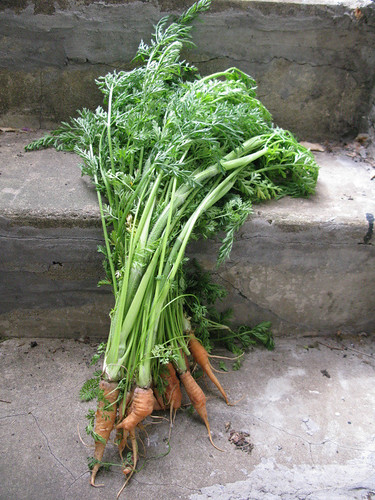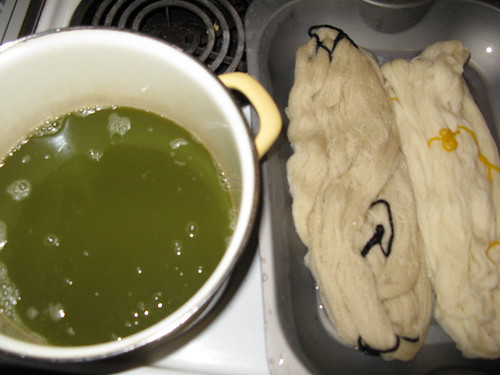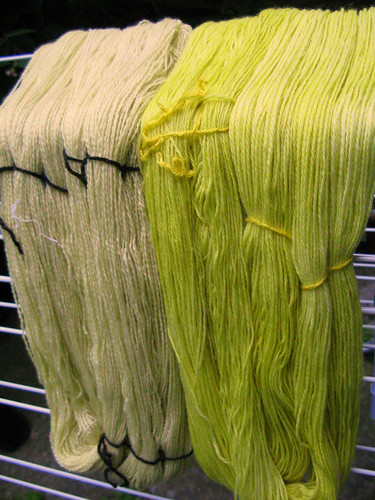Last weekend we harvested some carrots from our allotment. We got more carrot tops (330g) than carrot roots (160g) and it seemed a shame to put the tops straight in the compost so I experimented with some dyeing.

After a quick search on Ravelry I found rough instructions on a blog post. I boiled the carrot tops til they started to face, then chopped them up in my blender to make a thick fibrous soup. I let the mix simmer for a while longer then strained the mixture through a sieve. While this was going on I skeined then soaked 100g of blue faced leicester 4ply and 100g superwash merino with 20g of mordant, which at the time I thought was similar to Alum.

Here's the carrot top soup with the soaked yarn.

I simmered the yarn for about 30min until the yarn looked the colour of the soup. I let it cool then rinsed it. Loads of the colour bled out resulting in a yellow superwash yarn which looks a little warmer and brighter than in the photo below and a very pale yellow BFL. It turns out the mordant I had grabbed in haste is not similar to Alum but is used to fix plant fibres. I did rinse the yarn a lot but am dubious as to how colour fast it will be. I will try this again as I've seen some brilliant results on Ravelry and I've learnt my lesson on reading labels.


After a quick search on Ravelry I found rough instructions on a blog post. I boiled the carrot tops til they started to face, then chopped them up in my blender to make a thick fibrous soup. I let the mix simmer for a while longer then strained the mixture through a sieve. While this was going on I skeined then soaked 100g of blue faced leicester 4ply and 100g superwash merino with 20g of mordant, which at the time I thought was similar to Alum.

Here's the carrot top soup with the soaked yarn.

I simmered the yarn for about 30min until the yarn looked the colour of the soup. I let it cool then rinsed it. Loads of the colour bled out resulting in a yellow superwash yarn which looks a little warmer and brighter than in the photo below and a very pale yellow BFL. It turns out the mordant I had grabbed in haste is not similar to Alum but is used to fix plant fibres. I did rinse the yarn a lot but am dubious as to how colour fast it will be. I will try this again as I've seen some brilliant results on Ravelry and I've learnt my lesson on reading labels.

Comments